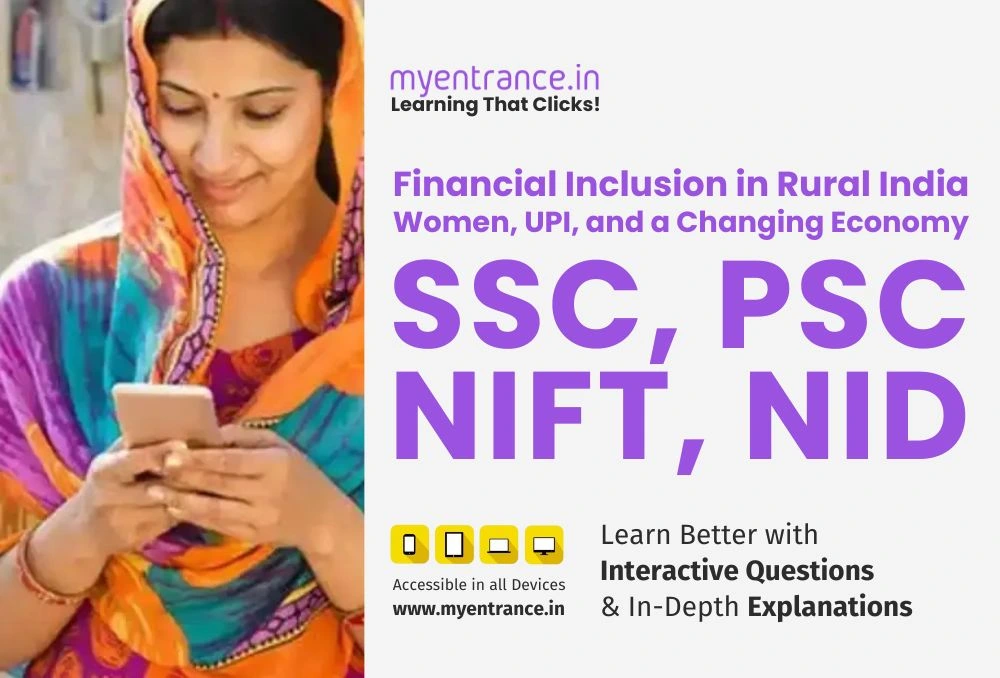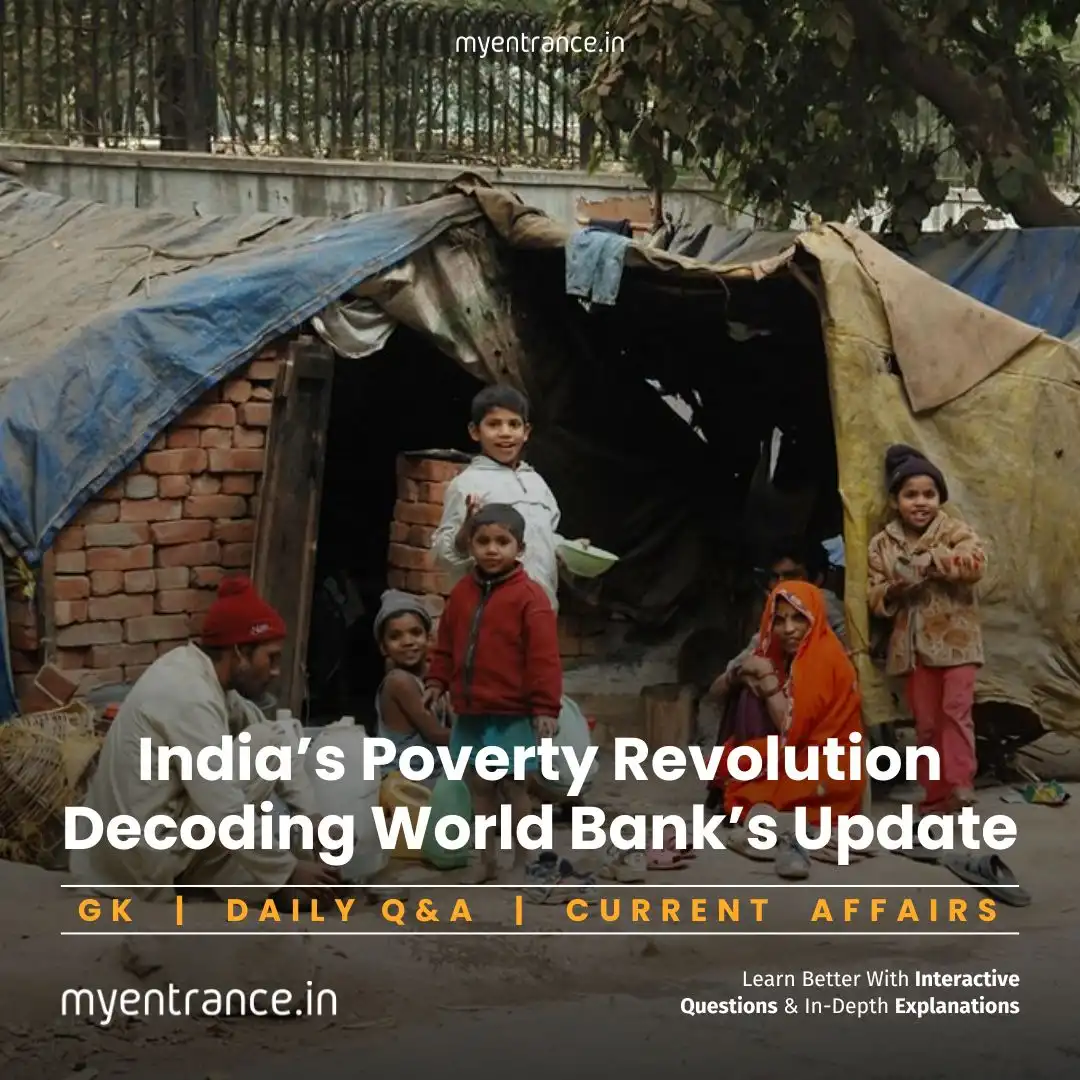Select Language
Financial Inclusion in Rural India: Women, UPI, and a Changing Economy
India’s digital revolution has a new face — rural women. Backed by powerful government initiatives and rising smartphone penetration, young rural women are embracing online banking like never before, reshaping the country’s financial landscape.
Rural Women at the Heart of India’s Digital Banking Transformation.
In a striking shift toward inclusive finance, rural women in India have emerged as key drivers of the country’s digital banking expansion. According to the Ministry of Statistics and Programme Implementation (MoSPI), online banking adoption among rural women jumped from 17.1% in 2022-23 to 30% in 2025 — a 75% surge. Even more remarkably, digital banking use among young rural women (ages 15–24) has skyrocketed by 162%, reaching over 51% adoption.
This shift aligns directly with syllabus topics under Governance, Economy, and Social Justice. It holds great relevance for aspirants preparing for upcoming exams, especially under themes like financial inclusion, gender empowerment, and digital infrastructure.
Why This Shift Matters
Women’s Empowerment: Digital access grants rural women more control over their finances, reducing dependency and enhancing their decision-making power.
Poverty Alleviation: Through Direct Benefit Transfers (DBT), funds reach intended beneficiaries without middlemen — saving ₹34,800 crore in 2024 alone.
Digital Economy Expansion: Increased rural participation supports India’s ambitious $5 trillion economy vision.
Civic Participation: Banking access enables better engagement with government welfare schemes, enhancing grassroots democracy.
Government Initiatives Fueling This Growth
PM Jan Dhan Yojana (PMJDY)
Launched in 2014, this scheme now boasts over 53 crore accounts, with women holding 29.56 crore of them — surpassing the population of the European Union.
Features include zero-balance accounts, RuPay cards, and accidental insurance coverage.
Unified Payments Interface (UPI)
With 86.7% of rural users relying solely on UPI, this system has removed banking barriers, even for those with limited literacy.
Digital India Stack
The JAM Trinity (Jan Dhan–Aadhaar–Mobile) enables seamless banking via biometric-based AePS systems.
Financial Inclusion Index (FI-Index)
Developed by the RBI, the FI-Index uses 97 indicators to measure access, usage, and quality of financial services.
What is Financial Inclusion?
Definition: Ensuring affordable and accessible financial services (like banking, credit, and insurance) for underserved populations.
Benefits:
Economic: Keeps rural citizens away from exploitative lenders and encourages entrepreneurship.
Social: Reduces gender and regional disparities — aligning with Sustainable Development Goals 5 and 10.
Governance: Enables clean and targeted delivery of welfare schemes like PM-KISAN and MGNREGS.
Internet’s Role in Grassroots Empowerment
Access to Information: Rural users can now monitor government schemes in real time.
Participatory Platforms: Panchayats use digital tools like the e-Gram Swaraj portal to plan development projects.
Social Voice: Platforms like WhatsApp and X (formerly Twitter) amplify the voices of marginalized communities.
Key Challenges & Practical Solutions
Challenge
Suggested Solutions
Digital Literacy
DIKSHA platform offers tutorials in local languages
Cybersecurity
Cyber Surakshit Bharat organizes awareness campaigns in villages
Poor Internet Access
BharatNet aims to connect 2.5 lakh gram panchayats with fiber-optic broadband.
Exam Boosters
RBI’s FI-Index Weightage: Usage (45%) > Access (35%) > Quality (20%)
UPI Daily Transaction Limit (2025): ₹1,00,000
67% of PMJDY accounts are in PSU banks; 55% are in rural areas
“Financial inclusion bridges the gap between economic development and social equity.” – (GS-III)
Analyze how digital banking empowers rural women – (GS-I Society)
Use case: Kudumbashree in Kerala – Women-led SHGs use UPI for community microlending
Sample Questions & Answers for Practice
Q1. What is the primary reason for the growth of digital banking among rural women in India?
A. Increased access through mobile phones and UPI-based platforms that simplify transactions.
Q2. Which scheme has significantly contributed to women’s financial inclusion in rural areas?
A. PM Jan Dhan Yojana (PMJDY)
Q3. What does the FI-Index measure?
A. It measures access, usage, and quality of financial services using 97 indicators.
Q4. Name one initiative to tackle digital illiteracy in rural India.
A. The DIKSHA platform, which provides learning resources in local languages.
Q5. What percentage of rural women aged 15–24 use digital banking in 2025?
A. 51.4%, according to MoSPI data.
Most Predicted Questions
Comprehensive study materials, Expert-guided tips & tricks, Mock tests and instant results.
Start your SSC/ PSC/ NIFT/ NID journey today with MyEntrance, your ultimate online coaching platform.








